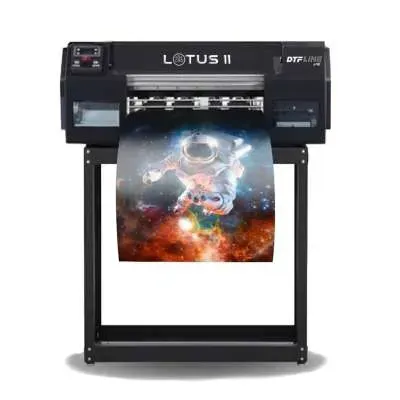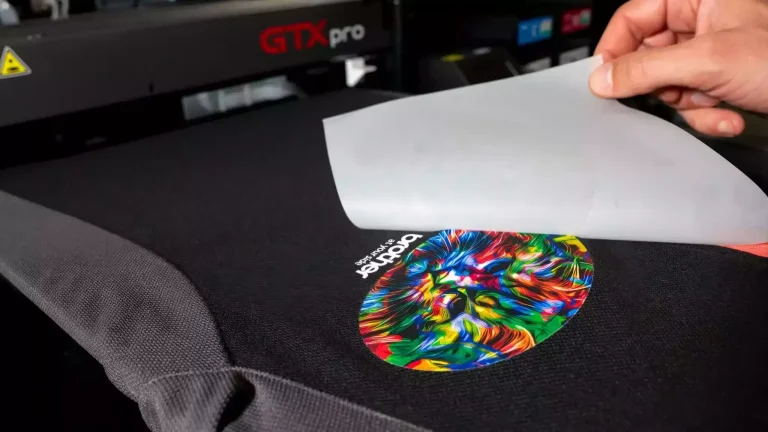DTF printing tips are essential for anyone looking to excel in the world of custom apparel decoration. As Direct to Film printing becomes increasingly popular, understanding the finer details can drastically improve your print quality. This technique offers vibrant images and the flexibility to apply designs on a wide range of fabrics, but without proper knowledge, you may fall short of achieving desired results. In this article, we will delve into the best practices for DTF printing, ensuring your prints not only look great but also stand the test of time. From selecting the right materials to post-printing care, these tips are tailored to elevate your DTF printing techniques to new heights.
When it comes to print techniques, mastering the art of transferring designs onto fabric can significantly enhance your creative capabilities. This is where strategies for Direct to Film application come into play, providing a bridge between digital design and physical products. By implementing the right methods and practices, you can ensure that your printed fabrics not only catch the eye but also endure through numerous washes. This guide will explore fundamental practices that characterize effective DTF printing, ensuring that you produce artwork that meets both aesthetic and durability standards. With a focus on quality and technique, you’ll be well-equipped to make your mark in the printing industry.
Choosing the Right Materials for DTF Printing Success
Selecting high-quality materials is the cornerstone of any successful DTF printing project. The choice of inks and transfer films plays a substantial role in the outcome of your prints. Opting for reputable brands that specialize in DTF printing supplies can significantly enhance your results. High-quality inks not only provide better color accuracy and vibrancy but also ensure that your prints will withstand the test of time, avoiding fading and wear after multiple washes.
Furthermore, it’s essential to choose films that are compatible with your specific printing setup. The right film helps with the smooth transfer of design elements, ensuring that details are preserved and the overall print quality is superior. Typically, high-grade films allow for sharper edges and vibrant colors, which are crucial for creating eye-catching designs that stand out in the market.
Mastering DTF Printing Techniques
Implementing effective DTF printing techniques can drastically improve the outcome of your apparel designs. One key aspect is understanding the correct application of heat and pressure settings during the transfer process. The ideal temperature range for DTF printing typically falls between 160°C and 180°C (320°F to 356°F). Maintaining this temperature is essential, as even minor fluctuations can alter the adhesion and durability of the prints.
Moreover, applying the correct pressure while using a heat press is equally important. Too much pressure can damage the film, while too little can result in incomplete transfers and poor adhesion. A well-calibrated press not only contributes to better print quality but also enhances the overall efficiency of your DTF printing process, making it essential to invest time in mastering these settings.
Essential Pre-Treatment Steps for DTF Printing
Pre-treatment is a critical phase in the DTF printing process that should never be disregarded. Properly pre-treating the fabric can significantly improve ink adhesion, resulting in vibrant and long-lasting prints. Pre-treatment solutions are often formulated specifically for various fabric types, helping to prepare the material for the transfer process, thus optimizing printing outcomes.
By taking the time to ensure that your fabric is adequately pre-treated, you not only enhance the appearance of the final product but also its washability and durability. This step is fundamental in ensuring that your prints remain intact over time, providing customers with high-quality products that resist fading, peeling, or cracking after multiple washes.
Creating High-Quality Artwork for Optimal Printing Results
The quality of your artwork directly impacts the final print quality in DTF printing. To achieve great results, it’s vital to utilize high-resolution images, ideally at least 300 DPI, and save them in formats compatible with DTF printers. Using vector graphics whenever possible is advisable, as they can be scaled without losing quality, which is essential for achieving crisp, clear designs.
Additionally, thoroughly checking your artwork for potential issues—such as unwanted backgrounds, misaligned elements, or incorrect color profiles—before printing can save you from disappointment later in the process. A well-prepared design not only enhances the aesthetic appeal but also ensures efficient printing, resulting in professional-grade outputs that are sure to impress customers.
Implementing Effective Post-Printing Care
Once you’ve completed your DTF printing, taking the right post-printing care is vital to ensure the longevity of your designs. Curing the printed designs adequately is essential; rushing this step can lead to peeling or fading. Ideally, allowing your garments to rest for at least 24 hours after printing can give the ink sufficient time to set and adhere properly.
Washing instructions also play a crucial role in maintaining the quality of your prints. Always recommend that customers use cold water and mild detergents when washing their garments, and encourage them to avoid harsh chemicals or high temperatures, which could compromise the integrity of the print. By educating customers about proper care, you can significantly extend the life of your DTF prints.
Best Practices for DTF Printing: Tips and Tricks
In the competitive landscape of DTF printing, adopting best practices can set you apart from the rest. These practices include choosing the right inks and films, optimizing your printing settings, and ensuring proper pre-treatment of fabrics. Each element is interconnected and contributes to the overall quality of your final prints, allowing you to deliver exceptional results.
Moreover, continually refining your techniques by keeping up with industry trends and advancements can help maintain superior print quality. Engaging with the DTF printing community and participating in workshops or forums can provide valuable insights and techniques, ensuring that your skills remain sharp and your prints consistently impressive.
Frequently Asked Questions
What are the best practices for DTF printing to achieve high-quality results?
To achieve high-quality results in DTF printing, follow these best practices: use high-quality inks and films, optimize your heat press temperature and pressure settings (typically between 160°C to 180°C), pre-treat fabrics properly for better adhesion, prepare high-resolution artwork, and implement post-printing care by allowing the prints to cure and using cold water for washing.
How do I choose the right inks and films for DTF printing?
Selecting the right inks and films for your DTF printing is crucial. Opt for trusted brands that specialize in DTF products to ensure better color vibrancy and durability. High-quality inks and films enhance adhesion and increase the longevity of your prints, leading to better overall print quality.
What temperature and pressure settings are best for DTF printing?
The ideal temperature settings for DTF printing range from 160°C to 180°C (320°F to 356°F). It’s essential to maintain consistent heat. Correct pressure is also vital; too much pressure can damage the film, while too little may cause incomplete transfers, so calibrate your heat press carefully.
Why is pre-treatment of fabrics important in DTF printing?
Pre-treatment of fabrics is important in DTF printing because it enhances the adherence of the print to the material. Using specific pre-treatment solutions tailored to the fabric type can significantly improve the durability and washability of the design, ensuring a longer-lasting product.
How can the quality of artwork affect DTF print quality?
The quality of artwork directly affects DTF print quality. High-resolution images (at least 300 DPI) ensure that prints are sharp and clear. Using vector graphics when possible allows for resizing without loss of quality. Always check your design for issues before printing to prevent unwanted results.
What post-printing care is needed for DTF prints?
After DTF printing, allow designs to cure properly to avoid issues like peeling. Avoid washing the garment for at least 24 hours to let the ink set. When washing, use cold water and mild detergents to maintain print quality and durability.
| Tip Number | Key Point | Explanation |
|---|---|---|
| 1 | Choose Quality Inks and Films | Utilize high-quality inks and films to ensure vibrant colors and better adhesion. |
| 2 | Optimize Temperature and Pressure Settings | Maintain a consistent temperature of 160-180°C and correct pressure for ideal transfers. |
| 3 | Proper Pre-treatment of Fabrics | Pre-treat fabrics using suitable solutions to enhance print adhesion and durability. |
| 4 | Prepare High-Quality Artwork | Use high-resolution images and vector graphics to create clear, crisp prints. |
| 5 | Implement Post-Printing Care | Allow designs to cure and avoid washing for 24 hours to maintain print quality. |
Summary
DTF Printing Tips are essential for anyone looking to achieve high-quality results in custom apparel decoration. By following these five key guidelines—selecting quality inks and films, optimizing temperature and pressure settings, ensuring proper pre-treatment of fabrics, preparing high-resolution artwork, and implementing effective post-printing care—you can significantly enhance the quality and durability of your prints. These practices not only ensure vibrant and lasting designs but also help in building a strong reputation in the competitive world of garment printing. Pay attention to these details, and you’ll be well-equipped to create stunning apparel that meets the expectations of your customers.






